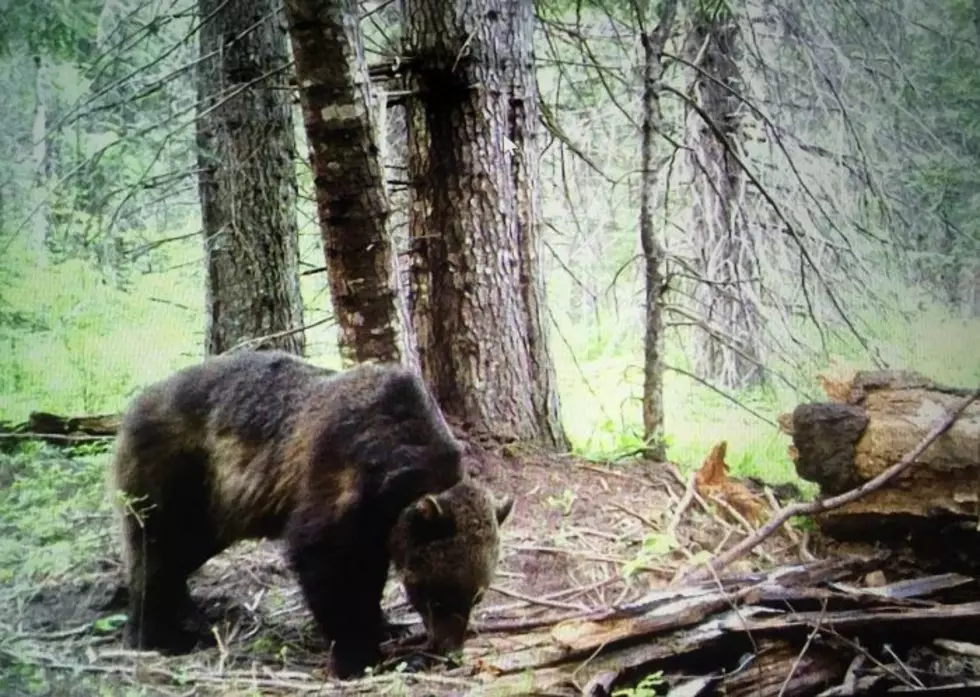
Bear managers: It’s time to write management plan for Bitterroot grizzlies
More grizzly bears are moving into the Bitterroot Mountains, so state and federal agencies are finally reconsidering long-dormant plans for bear management.
On Thursday, the Bitterroot subcommittee of the Interagency Grizzly Bear Committee talked about how new grizzly bear sightings in southwestern Montana create some urgency for having a plan in place to deal with them.
“We got bears on the periphery of the ecosystem, and frankly, they’re coming,” said subcommittee chair Chuck Mark of the Salmon-Challis National Forest. “Whatever promoting natural recovery is, we’re picking up what the original plan was from almost 20 years ago now and dusting that off. This is what was envisioned at that point in time. But 20 years go by and things change, and where do we go from here as far as anticipating what this is going to look like for the Bitterroot ecosystem?”
Of the five main grizzly bear recovery areas, the Bitterroot has mostly been forgotten as the IGBC has focused on recovering populations in Yellowstone, the Northern Continental Divide and the Cabinet-Selkirk ecosystems and debated seeding the Cascade region in Washington with bears. The reason: The U.S. Fish and Wildlife Service decided in 2001 the Bitterroot was to be a “natural recovery” area where the population would come from bears migrating in naturally with no transplants.
It appears that has begun.
USFWS Bear Recovery Coordinator Hilary Cooley said a collared grizzly from the Cabinet-Yaak crossed Interstate 90 two weeks ago and is now in the Kelly Creek area of Idaho, west of Lolo Pass. It’s close to the area where an Idaho black bear hunter shot a grizzly in 2007.
“I don’t know yet if that’s within the recovery boundary. If it’s not, it is extremely close. Bears are not just coming – one is actually here,” Cooley said.
It’s still black bear season in Idaho, so Idaho Fish and Game has notified hunters to be cautious. Endangered Species Coalition spokesman Derek Goldman asked why the hunt couldn’t be suspended in the Kelly Creek area, but no Idaho Fish and Game representatives were present to answer his question. Mark said the committee needs more participation from IDFG.
Montana Fish, Wildlife & Parks bear biologist Jamie Jonkel said he’s been hearing reports of grizzly bears in the Sapphire Range east of the Bitterroot River, but he’s been unable to verify their accuracy. One photo from last year may have shown the same bear that later ended up on the Stevensville golf course and was subsequently transplanted back to the Bob Marshall Wilderness.
That’s why Mark and Cooley said more dedicated monitoring was needed. Cooley said she has a monitoring plan ready to go, which would include remote cameras and DNA analysis. But it would cost $150,000 to $200,000, which isn’t currently available.
Jonkel cautioned that the first step should be reaching out to the community for support and that it might be better to focus on particular areas of the Bitterroot, such as the West Fork Bitterroot and preserving the open-space corridor between Lolo and Florence. He has been trying to rekindle the Sapphire-Lolo Wildlife Working Group to protect the open space remaining there.
“The linkage and wildlife movement efforts might be something to work with,” Jonkel said. “Rather than taking an approach where you push grizzlies, I was thinking of an approach where maybe you go with linkage and passage.”
Linkage is an important consideration after Missoula federal Judge Dana Christensen criticized the USFWS for trying to delist Yellowstone grizzlies without ensuring more connectivity between populations.
Costello said she was still analyzing possible routes for grizzly movement between the different recovery zones.
Mark said both the Salmon-Challis and the Nez Perce-Clearwater forests would be addressing connectivity as part of their forest plan revisions.
Jonkel said with bears traveling south from the Cabinets, education efforts should be expanded into to the lower Clark Fork River region. FWP bear biologist Cecily Costello said the committee should also do education and outreach in the Big Hole Valley southeast of the Bitterroot, because people were reporting bears there.
“The beauty of that route to get to the Bitterroot is the lack of human population but obviously there are a lot of cattle in that valley,” Costello said.
In the meantime, the committee still has one pressing uncertainty: what to do with bears that need to be removed, like the one on the Stevensville golf course. Can or should they be moved to areas outside specified recovery zones?
FWP Region 2 Supervisor Randy Arnold said FWP has decided to wait to come up with a policy until the Governor’s Grizzly Bear Advisory Council produces its recommendations in about a year.
In March, Gov. Steve Bullock announced the formation of a citizen council representing several stakeholders that would help the state decide how grizzly bears will be managed once they’re off the Endangered Species list.
“If we’re going to do (outreach) for any location, we might very well be undermining the advisory council that’s just now starting,” Arnold said. “I’d love to think we could develop an interim plan and a matrix on what are we going to do, but the reality is we’ve been doing this for years without a matrix. There are so many variables that we’re going to take it case-by-case.”
The Bitterroot subcommittee will address these and other issues when the IGBC executive committee meets next week.
Contact reporter Laura Lundquist at lundquist@missoulacurrent.com.
